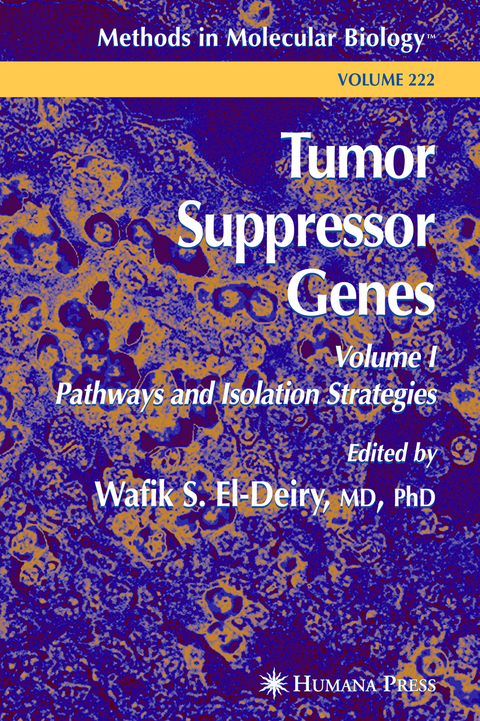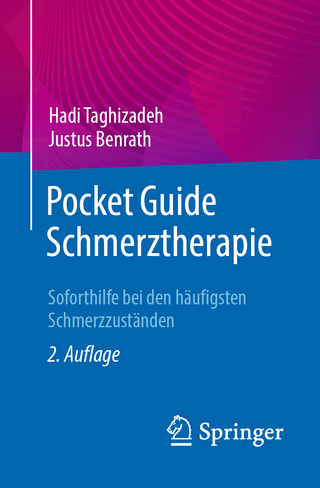
Tumor Suppressor Genes
Humana Press Inc. (Verlag)
978-0-89603-986-5 (ISBN)
It has become clear that tumors arise from excessive cell proliferation and a c- responding reduction in cell death. Tumors result from the successive accumulation of mutations in key regulatory target genes over time. During the 1980s, a number of oncogenes were characterized, whereas from the 1990s to the present, the emphasis shifted to tumor suppressor genes (TSGs). It has become clear that oncogenes and tumor suppressor genes function in the same pathways, providing positive and ne- tive growth regulatory activities. The signaling pathways controlled by these genes involve virtually every process in cell biology, including nuclear events, cell cycle, cell death, cytoskeletal, cell membrane, angiogenesis, and cell adhesion effects. Tumor suppressor genes are mutated in hereditary cancer syndromes, as well as somatically in nonhereditary cancers. In their normal state, TSGs control cancer development and p- gression, as well as contribute to the sensitivity of cancers to a variety of therapeutics. Understanding the classes of TSGs, the biochemical pathways they function in, and how they are regulated provides an essential lesson in cancer biology. We cannot hope to advance our current knowledge and to develop new and more effective therapies without understanding the relevant pathways and how they influence the present approaches to therapy. Moreover, it is important to be able to access the powerful tools now available to discover these genes, as well as their links to cell biology and growth control.
Known Tumor Suppessor Genes and Pathways.- Growth Control by the Retinoblastoma Gene Family.- The APC Tumor Suppressor Pathway.- Hereditary Breast and Ovarian Cancer Genes.- Hereditary Colon Cancer Genes.- Patched, Hedgehog, and Skin Cancer.- Tumor Suppressor Genes in Lung Cancer.- TP53, hChk2, and the Li-Fraumeni Syndrome.- Genetic Alterations in Esophageal Cancer.- PTEN and Cancer.- VHL and Kidney Cancer.- p16INK4A and Familial Melanoma.- The INK4a/ARF Locus and Human Cancer.- Progression Model of Prostate Cancer.- Neurofibromatosis Type 1.- Wilms’ Tumor as a Model for Cancer Biology.- Inadequate “Caretaker” Gene Function and Human Cancer Development.- The Regulation of Tumor Suppressor Genes by Oncogenes.- Identification of Tumor Suppressor Genes.- Determination of Cancer Allelotype.- Epidemiological Approaches to the Identification of Cancer Predisposition Genes.- Characterization of Translocations in Human Cancer.- Positional Approaches to Cancer Genetics.- Hybrid Capture of Putative Tumor Suppressor Genes.- Approaches to Proteomic Analysis of Human Tumors.- Representational Difference Analysis of Gene Expression.- Antisense Libraries to Isolate Tumor Suppressor Genes.- Genetic Suppressor Elements in the Characterization and Identification of Tumor Suppressor Genes.- Cross-linking Subtractive Hybridization to Identify Tumor Suppressor Genes.- Suppression Subtractive Hybridization for Identification and Functional Analysis of Tumor Suppressor Genes.- SAGE as a Strategy to Isolate Cancer-Related Genes.- Differential Display Techniques to Identify Tumor Suppressor Gene Pathways.- Detection of Mismatch Repair Gene Expression in Urologic Malignancies.
| Erscheint lt. Verlag | 3.3.2003 |
|---|---|
| Reihe/Serie | Methods in Molecular Biology ; 222 |
| Zusatzinfo | 73 Illustrations, black and white; 520 p. 73 illus. |
| Verlagsort | Totowa, NJ |
| Sprache | englisch |
| Maße | 178 x 254 mm |
| Themenwelt | Schulbuch / Wörterbuch |
| Medizin / Pharmazie ► Medizinische Fachgebiete ► Chirurgie | |
| Medizin / Pharmazie ► Medizinische Fachgebiete ► Onkologie | |
| Naturwissenschaften ► Biologie ► Biochemie | |
| Naturwissenschaften ► Biologie ► Zellbiologie | |
| ISBN-10 | 0-89603-986-2 / 0896039862 |
| ISBN-13 | 978-0-89603-986-5 / 9780896039865 |
| Zustand | Neuware |
| Haben Sie eine Frage zum Produkt? |
aus dem Bereich


